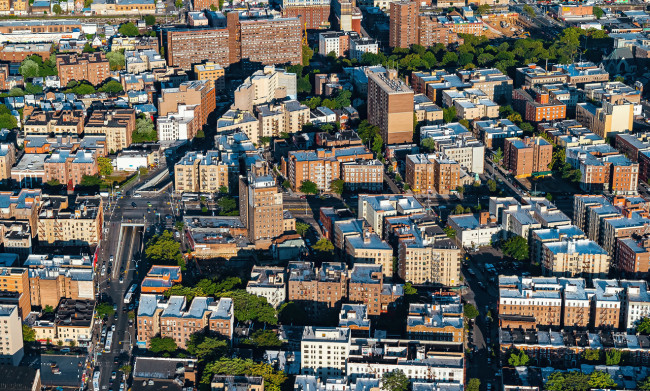Frightening new study shows that the majority of New Yorkers are just one paycheck away from losing their housing
Even in the midst of an unprecedented homelessness epidemic and affordability crisis, these stats are startling: A new report from the Association For Neighborhood & Housing Development shows that close to 60 percent of New Yorkers don't have adequate emergency savings (i.e. enough to cover three months worth of living expenses), meaning that just a single missed paycheck could lead to loss of their homes.
As DNAinfo reports, the data is broken down by neighborhood and borough, and shows areas like the south Bronx, Brownsville, Bushwick, Bed-Stuy, the Lower East Side/Chinatown, and East Harlem, to be some of the most at-risk areas in their respective boroughs. The report also tracks numbers like typical commute time, percentage of residents without health insurance, employed in service sector jobs, and who are rent-burdened, and the percentage change in real estate prices between 2010 and 2015.
"Sixty percent of New Yorkers don't have enough savings to cover basics like rent, food, and medical care [in the event of an emergency or job loss]," ANHD policy coordinator Lena Afridi tells us. "It's not just limited to communities with higher rates of unemployment and higher rates of poverty. You're seeing it in middle-class and wealthier communities, too. People are strapped."
Unsurprisingly, many of the same neighborhoods where residents don't have a savings cushion are also disproportionately rent-burdened—meaning residents pay more than a third of their income towards rent—while high-priced Manhattan neighborhoods take the cake for eye-popping price changes over the last several years. To wit: Prices jumped 273 percent in the Financial District, and 333 percent in Midtown. In Brooklyn, Williamsburg/Greenpoint led the pack with a 170 percent jump in sales prices.
The idea here isn't to simply leave you despairing about the state of affordability in our city, but rather, to help residents and activists more easily identify what the ANHD terms "risk to economic opportunity," or the obstacles in a given neighborhood that stand in the way of locals' access to education, infrastructure resources, well-paying jobs, small business loans, and other factors that traditionally help people work their way up their economic ladder.
Afridi notes that the ANHD has been working on initiatives to on retaining industrial manufacturing jobs in the city, as they offer much higher salaries to employees without college degrees than comparable positions in the service industry. This is especially important in neighborhoods like Sunset Park, an area that has traditionally been a hub for manufacturing jobs that are crucial to its population, which has a relatively high rate of non-English speakers, and a low rate of residents who have graduated high school or received higher education. Another key initiative for the ANHD is increasing options for small business loans in a wider range of city neighborhoods.
On the individual level, she recommends "looking through the chart to see what's happening in your neighborhood, and then reaching out to your local community based organizations." (As we've written previously, your local Community Board and block association are both great places to start.) "Many are doing excellent work, and are always looking for people to engage and help out," says Afridi. "And connecting with what they're doing at the micro level can make a huge difference."
You Might Also Like



























